This Component of Trump's Climate Order Could Do the Most Damage
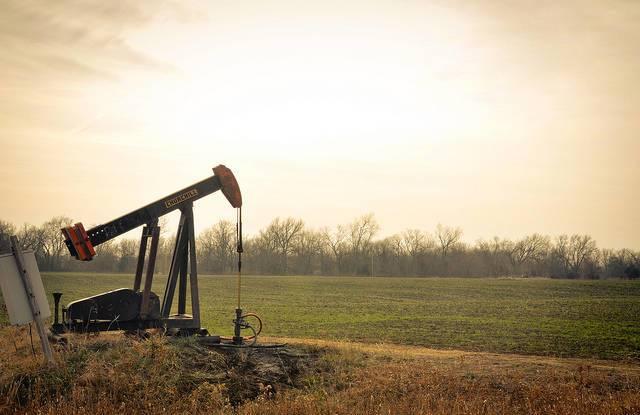

On Tuesday, in a move he said would start “putting an end to the war on coal,” U.S. President Donald Trump signed an executive order that will gut environmental regulations and programs launched during the Barack Obama administration, including the Clean Power Plan.
Most energy analysts and experts agree that the demise of coal is tied to the natural gas boom. Nevertheless, Trump followed through with one of his most notable campaign promises. At the signing ceremony, he was flanked by several coal miners and administration officials at the Environmental Protection Agency headquarters.
The wide-ranging order will most likely end methane emissions standards, scrap carbon emissions limits for new power plants, and accelerate drilling for oil and gas on federally-owned lands.
Among the many rules and provisions Trump's latest executive order will reverse, one that deserves significant attention is the social cost of carbon, or SCC. Used by government agencies when assessing the impact of new regulations and investments, the SCC could include costs tied to human health, agriculture, property and fluctuating energy prices.
As Noah Kaufman of the World Resources Institute explained on TriplePundit earlier this month, SCC dates back to 1981, when the new Ronald Reagan administration required all federal agencies to crunch the financial numbers of proposed regulations implementing them.
Since the Obama administration convened a group of technical experts to finalize a set of SCC costs, such accounting has become more streamlined. Although the actual costs vary, the EPA estimated that they will rise over time as future emissions will most likely cause greater environmental and economic damage.
Most environmental experts polled by the Institute for Policy Integrity said the most used SCC price, $36 per ton of carbon, is too low. But as Kaufman and other analysts insist, such an estimate at the very least can help guide policymakers on the costs and benefits of implementing environmental regulations.
Without this metric, former White House economist Joseph Aldy says there is no way to gauge the long-term financial impacts of new or rescinded regulations – and one result is a government that is less transparent.
Investors and environmental groups attacked the executive order as misguided and one that ignores ongoing shifts in America's energy industry and indeed its economy.
“Today’s actions are a wholesale attack on decades of bipartisan work in addressing the very real threat of climate change,” Mindy Luber, head of the investor group Ceres, said in a public statement on Tuesday.
“By taking this backward step, the U.S. risks a stalled transition to a low-carbon economy, thus giving China and other countries the upper hand as they embrace renewable energy and other low-carbon technologies that are proliferating all across the globe.”
Former U.S. Rep. Henry Waxman, now head of the consultancy Waxman Strategies, said the order kneecaps America's leadership on climate change over the past decade:
“We don’t know how much today’s announcement from the Trump administration will hamper the deployment of wind, solar and other renewable energy, or whether and how much it will slow the transformation of our energy sector," Waxman told 3p."We do know that our future is in clean, renewable energy technologies, and that we need to hurry that transition. Today’s announcement does compromise our nation’s ability to lead on international efforts to stop climate change. This is undoubtedly a step in the wrong direction.”
Other organizations pointed out that the social cost of carbon is a way for policymakers to not only gauge the impact of new environmental rules domestically, but also measure the costs and benefits of international climate resilience spending. Climate change is, after all, a global problem that requires worldwide cooperation.
The NGO Oxfam described Trump’s latest directives, particularly the dismissal of SCC accounting, as a reversal of policies that will hit poorer communities in the U.S. and abroad the hardest.
In an email to 3p, Bob Perciasepe, president of the Center for Climate and Energy Solutions, described the executive order as a “misreading” of the economic opportunities climate action can present: “The social cost of carbon is a sensible tool to prudently factor those very real economic costs into government decision-making. Ignoring those costs won’t make them go away.”
Describing Tuesday’s action, or grandstanding, as a handout to the president’s billionaire oil and gas friends may come across as simplistic and a cheap shot. But the order ignores the stubborn facts of the U.S. energy industry.
According to the U.S. Energy Information Agency, less than 25 percent of the U.S. oil supply is imported – and 40 percent of that amount comes from Canada, making Trump’s promise to boost “energy independence” hollow. And accounting for the social cost of carbon has helped fuel the U.S. clean energy sector – which, according to a recent report, now employs more people than the fossil fuels sector in the vast majority of U.S. states.
Image credit: Sarah Nichols/Flickr
On Climate Change, America Is Less Divided Than We Think


We often think of climate change advocacy as a partisan issue: Democrats believe in human-instigated climate change, and Republicans don’t. Republicans are largely unconvinced that America needs to do anything to stop global warming, and Democrats are the ones with a plan.
Well, a recent Yale study has put that preconception to rest.
It turns out 75 percent of Americans want carbon dioxide regulated as a pollutant, according to a nationwide survey conducted by the Yale Program on Climate Change Communication.
Further, the majority of Americans want the government to regulate carbon emissions from coal-burning plants, even though the feds say they won’t. And 69 percent believe emissions from existing coal plants should be limited.
Whether or not the current administration has any faith in climate scientists, the American public does, at least if this sampling is any indication. More than 70 percent of those surveyed say they trust scientists’ interpretations when it comes to global warming.
But the data that really summarizes what Americans feel about those unpredictable storms and unsettling stories of sea-level rise can be found in two of the country’s largest states, Texas and Florida.
That’s right: Two largely Republican strongholds that repeatedly voted for governors who dismiss the concept of climate change, and voted for a presidential candidate that eschews climate action, may tell us the most about just how we view our role in Mother Nature’s tiff with human technology. And to be sure, it’s not a cut-and dry issue.
In both states, just over half of the population surveyed said they are worried about climate change. In Texas, 68 percent said they felt global warming will harm future generations. But interestingly, only 42 percent of those questioned believe the phenomena will harm them personally.
In Florida, 73 percent of the population surveyed feels they can trust what scientists say about global warming. And over half believe climate change is caused by human activity. But curiously, only 24 percent believe the majority of scientists think climate change is a genuine phenomena.
And as in Texas, the issue of whether humans cause global warming isn’t defined by party affiliation. Florida is a patchwork of perspectives when it comes to climate issues. Even in many counties that voted heavily Republican, residents lean toward believing that humans have a role in their climate problems.
New York Times writers Nadja Popovich, John Schwartz and Tatiana Schlossberg drilled down even further on this issue recently. West Texas communities, where residents overwhelmingly voted for Donald Trump weren’t afraid to look for alternative measures to combat drought, the writers found. As in California, Israel and other areas of the world where chronic drought can dominate living conditions, West Texas residents have established systems for recycling their rain water – unlike more progressively-leaning communities in other areas of the state.
The reason for this difference in attitude, say the writers, could be demographics: The young Latino populations in West Texas may be more willing to meet the rigors of climate adaptation than their parents.
But then, there’s nothing like experience to force adaptation as well. Communities in and around the Houston region that voted overwhelmingly for Hillary Clinton in 2016 have taken on climate change in other ways by developing mitigation plans that may ultimately help them preserve key industries and infrastructure. As we examined in our earlier post on climate mitigation, Houston's efforts were incentivized by new software and tools that allowed locals to zero-in on climate behavior and fortify their communities.
The same challenges are shaping the behaviors and opinions of South Florida residents, where rising sea levels, polluted drinking water sources and flooding streets are forcing these Floridians to take a harder look at options than, say, inland communities in Florida’s panhandle. Miami-area residents, for example, are the most likely to believe future generations will be at risk from climate impacts. In communities in Central North Florida, while most respondents agreed to some extent that future impacts were a possibility, people were less aware of the risks for their offspring.
This research is part of a large set of surveys (more than 18,000 respondents) conducted since 2008. The information the Yale team gleaned was then overlaid with demographics from Census reports to get an accurate view of gender, race, ethnicity and education. The researchers acknowledge that opinions can change over time, and that’s been taken into account in the survey results.
One additional bit of information they highlighted is the relationship between opinion and communication. The people who were most concerned about climate change and its future impacts appeared to talk about climate change with those around them more often than those who were not concerned -- but not by much. In Monroe County, where Key West is expected to face catastrophic flooding, only 38 percent of respondents said they talked about global warming at least occasionally.
And media reports do seem to matter as well. Although the surveys were only able to capture state estimates about how often people felt the media talked about climate change, the numbers were still informative. An estimated 23 percent of Texans said they heard about global warming from the media once a week or less, whereas those states that reported the highest concerns about global warming, such as California, Oregon, Washington and New Mexico, exhibited higher percentages of people who said they heard global warming mentioned on a weekly basis in the media.
Does the frequency of media discussions affect how much Americans feel we need to act toward a threat? Or do personal opinions determine whether news reports feed us the facts about a controversial topic like climate change? Maybe that’s a topic for another year’s survey.
Wikimedia/FloydPhoto
Rolling Back the Clean Power Plan Will Hurt U.S. Jobs, Competitiveness


By Bob Keefe
U.S. President Donald Trump’s plans to roll back the Clean Power Plan and other commonsense clean energy and climate policies puts our environment and our children’s future at risk.
It also puts something else at risk: American jobs and competitiveness.
More than 3 million people now work in clean energy in America, according to the Department of Energy. These are hard-working Americans who build and install solar panels and wind turbines; manufacture Energy Star appliances; and make our homes, offices and schools more efficient with better lighting, heating and insulation. Solar jobs grew by an incredible 25 percent last year, while wind energy jobs grew by 32 percent.
The Clean Power Plan sets a roadmap for states to reduce emissions from existing power plants by 30 percent by 2030 by replacing dirty and outdated energy sources with clean, renewable energy and energy efficiency.
From a business perspective, the plan provides market clarity to companies on the direction the country is going on energy, which allows them to invest, expand and hire new workers to meet the expected demand for clean energy.
That’s why more than 1,000 businesses joined in a letter to President Trump asking him to support a low-carbon economy and why more than 300 E2 business leaders wrote Congress in support of the Clean Power Plan.
With the executive order signed on Tuesday, the Trump White House aims to gut the Clean Power Plan, while simultaneously giving a grab-bag of government benefits to the fossil fuel industry. In signing the order, President Trump effectively kicked those 3 million American workers in the teeth and told them their jobs don’t matter.
His executive order solidifies the backward America First Energy Plan that will make America last in competitiveness by completely ignoring solar, wind and energy efficiency and putting all our country’s bets on 19th-century technology — coal, oil and other fossil fuels.
By way of comparison, the coal industry now employs less than 70,000 Americans. About 195,000 work in oil and gas extraction.
While President Trump is determined to completely ignore modern energy technology and instead strengthen our shackles to fossil fuels, America’s competitors on the global market are preparing to eat our economic lunch.
As America retreats on renewables, China plans to invest at least $360 billion in solar, wind and other renewables over the next three years. Germany, long a global leader in clean energy, is working on policies that will send renewable energy costs to record lows — putting more money in the bank accounts of businesses and consumers that will be reinvested in the economy.
Fortunately we have some real leaders in our states that realize the economic and environmental benefits of clean energy. In a statement on Tuesday, the governors of New York and California reaffirmed their commitment to exceeding the targets of the Clean Power Plan. They said doing so is good for both the environment and the economy in two of the nation’s biggest states.
“Dismantling the Clean Power Plan and other critical climate programs is profoundly misguided and shockingly ignores basic science,” said Govs. Andrew Cuomo of New York and Jerry Brown of California. “With this move, the administration will endanger public health, our environment and our economic prosperity.”
About 500,000 Californians and 85,000 New Yorkers work in clean energy today, according to E2’s analysis.
President Trump has promised to be “the greatest jobs president that God has ever created.”
That won’t happen by rolling back policies like the Clean Power Plan.
What will happen is that American jobs and American competitiveness in clean energy will suffer.
Image credit: Flickr/Land Rover Our Planet
Bob Keefe is executive director of E2 (Environmental Entrepreneurs) a national, non-partisan group of business owners, investors and others who advocate for policies that are good for the economy and good for the environment. On Twitter @bkeefee2
Coal Executive to Trump: You Can't Bring Mining Jobs Back
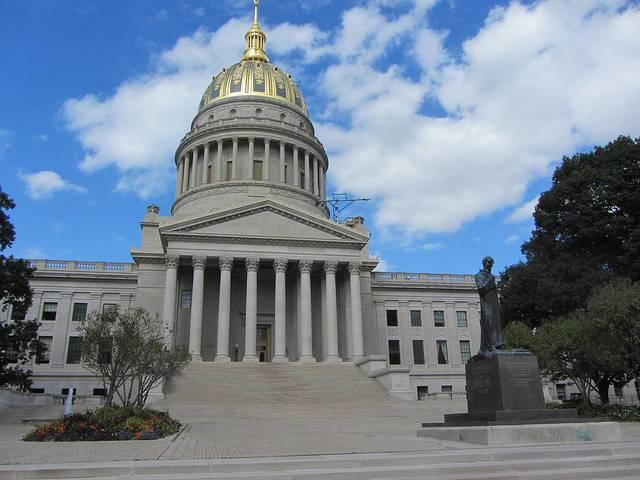

The American coal industry may have won a battle yesterday with President Donald Trump’s dismantling of environmental regulations via executive order. But the stubborn reality of the country’s energy portfolio shows that coal has already lost the war.
Even one of the coal sector’s most strident generals, Murray Energy founder and CEO Robert Murray, acknowledged that coal jobs will not come back to the U.S. any time soon.
In an interview with the Guardian, Murray warned that while times are “better” for his company and the coal industry, Trump should “temper” expectations when it comes to any future revival in coal jobs. “He can’t bring them back,” Murray told reporter Dominic Rushe in an interview published on Monday.
If Murray thinks coal jobs will not bounce back in significant numbers, he certainly placed much of the blame on the Barack Obama administration for hastening the coal industry’s decline. He described the former president and his supporters as the “greatest destroyers” in American history and called Trump’s election a victory for working people.
Whether these people’s victory will return the jobs they lost is doubtful. The U.S. Mine Safety and Health Administration (MSHA) last estimated that 98,505 people worked in coal mines at the close of 2015. That is down 23 percent from the 127,745 people who worked in the industry back in 2008.
But the debate over what killed coal overlooks the fact that the industry has been in decline for decades, from the 228,000 workers it in 1980. As Patrick Reis discussed in The Atlantic almost four years ago, changes in how coal is extracted -- including automation -- contributed to a steep reduction in employment at mining operations nationwide.
The sharp decrease in employment, in fact, could be attributed to the administrations of Ronald Reagan, George H.W. Bush or Bill Clinton – although another side of the story is that while a more efficient coal sector resulted in far less employment, it also translated into higher pay for those who were able to hang onto their jobs.
Furthermore, although analysts expect a slight uptick in U.S. coal production over the next two years, they say employment in the sector is likely to continue falling. Most new coal jobs will come in regions such as the Powder River Basin in Wyoming, where coal is far easier to extract than from the older Appalachia mines in states such as West Virginia.
While voters bought into the popular image of coal miners wielding pickaxes and donning hats with carbide lamps, much of that work is now done by bulldozers and conveyor belts, Jennifer A. Dlouhy and Ari Natter of Bloomberg pointed out this week. So in fact it was capitalism, not regulations, that demolished the coal industry, added Chris Isidore of CNNMoney.
This week’s interview was not the first time Murray publicly warned Trump about his hopeful rhetoric.
Speaking to CNNMoney last December, Murray said at best Trump’s election could stop the industry’s bleeding, rather than inspire a complete turnaround. Insisting that a change of administrations could prevent the industry from any further collapse, Murray said of Trump’s focus on coal, “If he just stops it where it is, that will be a wonderful thing.”
Image credit: David Wilson/Flickr
Hire More Veterans: Starbucks Did and Never Looked Back


Four years ago, Starbucks embarked on a program to hire 10,000 veterans by 2018. The company reached that target well ahead of time, but it did not stop for a breather. Last week, Starbucks announced a new goal of hiring 25,000 veterans and their spouses by 2025.
The Starbucks experience offers a compelling illustration of the impact veterans can have on corporate culture, and on the relationships among a company's employees, their families and their communities.
Veteran culture, meet corporate culture
In an exclusive interview with TriplePundit, Starbucks spokesperson Reggie Borges described one key reason why Starbucks decided to increase its veteran hiring goals.Borges said veterans tend to motivate the entire team within a store. That "elevation," as the company describes it, goes far beyond the store walls.
When Borges talks about elevating a team, he is referring to the level of engagement between partners (Starbucks's preferred word for employees) and their communities.
Community engagement is an area of critical importance to Starbucks, which has positioned itself as the "third place" that comes right after home and work in terms of where people connect with each other.
Starbucks has found that military veterans and their spouses tend to engage more with their communities in volunteer capacities and other activities, Borges told us, and there is a strong ripple effect on non-military partners. The company has seen that when veterans and their spouses are part of a team, the non-military partners also become more active and involved.
Borges also noted that veterans come to Starbucks equipped with years of immersion in a culture of leadership, discipline and teamwork. These are essential life skills that apply to food service and many other sectors.
Mining employees for corporate social responsibility
The veteran hiring program also relates to an other area that Borges discussed with TriplePundit.Starbucks relies heavily on input from its partners to shape its corporate social responsibility (CSR) profile.
As Borges describes it, with a workforce of approximately 330,000, Starbucks has a built-in sounding board for new ideas from communities across the globe:
"One of the great benefits we have is our partner audience," said Borges of Starbucks. "We pride ourselves on listening to their needs and wants and desires."The flip side is also essential:
"If we think it is something our partners won't be proud of, then we don't want to be part of it."Starbucks's College Achievement Plan and FoodShare are two examples of programs that grew out of partner concerns.
The growing veteran workforce will give Starbucks yet another level of insight into the communities it serves, Borges told us.
Starbucks also plans to add 100 more stores near military bases by 2025, offering the company even more ears to the ground on veterans' issues.
CSR, meet crisis management
On a broader level, the veteran hiring program also demonstrates the value of proactively embarking on solid corporate social responsibility initiatives -- before a boycott or other crisis erupts.Starbucks is a big target, and it powered through a string of short-lived boycotts over the past several years. The most recent one hit on Jan. 29, when the company pushed back against President Donald Trump's so-called Muslim ban by pledging to hire more refugees.
That provoked the white nationalist-affiliated organization Breitbart to issue a call for Trump supporters to boycott the company.
If the veteran hiring pledge was a new initiative, Starbucks could have exposed itself to more criticism for using veterans as a shield against negative publicity. But the initial goal was set four years ago, long before Trump's ant-immigrant sentiments took the form of an executive order.
Around that time, Starbucks also set its initial goal of locating 30 new stores near military bases.
Starbucks reached the 30-store goal last fall. On Sept. 22 -- again, long before the restrictions on Muslim travelers -- the company ramped up its commitment to veterans' issues with a pledge to leverage those locations to provide services for veterans. Here's a snippet from the press release:
"With the support of the 30 Military Family Stores across the U.S., Starbucks will now focus on programs that address the specific needs of veterans, military spouses and active-duty service members," the company said last year. "This includes Military Mondays, a collaboration between local veteran service organizations and Starbucks that offers pro bono legal support and other veteran and military spouse services."
When boycotts (don't) work
Despite Starbucks's track record on veterans' issues, last week Bloomberg positioned the increased hiring goal as a defensive maneuver. The headline was this: Starbucks Doubles Down on Military Hiring After Boycott Threats.And, here is the lede:
"Starbucks Corp., after facing a backlash for promising to hire refugees, plans to employ more U.S. military veterans."However, the article does not provide any details that support a relationship between the boycott and the hiring announcement.
In fact, the veterans pledge was just one part of a three-part announcement Starbucks issued on March 22 -- which also included a strong reaffirmation of its refugee hiring pledge:
"The company has formed an advisory relationship with the United Nations High Commission for Refugees," Starbucks said in a press release last week. "As part of the effort, Starbucks is partnering globally with the International Rescue Committee and the Tent Foundation. In the United States, the company is allied with No One Left Behind, an organization that assists American military allies who served alongside American armed forces."Bloomberg's Leslie Patton did not include any of the above information on refugees in the article. Instead, she closed with some new menu items that were not part of the March 22 announcement:
"[Starbucks] will begin selling a new line of grab-and-go salads and sandwiches, dubbed 'Mercato,' in Chicago next month. Starbucks also is trying to lure more diners with a gluten-free breakfast sandwich and vegan bagel."
Who knew?
Despite the Bloomberg article, Breitbart's latest foray into "hashtag activism" seems to have run out of steam before it began, demonstrating yet again that most boycotts fail.
Breitbart has obsessively covered the so-called Starbucks boycott from the beginning, but there was no apparent impact on the company in the days immediately following Jan. 29.
In an update reported on March 11, Starbucks told Reuters its performance metrics did not shift after Breitbart issued its call for a boycott.
Opportunities for youth
In addition to covering veteran and refugee initiatives, Starbucks's March 22 announcement also included an update on its Opportunity Youth program for young people aged 16 to 24 who are not in school or working.As with the focus on veterans, Opportunity Youth combines employment with the location of new stores in communities where partners have their own roots.
The program also leverages support from other employers through the Opportunity Coalition. Potential hires are recruited at job fairs with multiple employers on the scene. The aim is to provide a supportive environment where youth can experience a more supportive environment than they would encounter in a typical job interview.
Starbucks initially aimed to hire 10,000 young people as part of Opportunity Youth by 2018. The company has already rocketed past that with 40,000 hires, and it now hopes to reach 100,000 by 2020.
Borges says that, like veterans, these young people bring a unique dynamic to their teams:
"There is a level of hunger and desire to be successful. They are looking for a chance. It's not so much what we are doing; we are just giving them the opportunity. The effort is all theirs."It looks like Starbucks will just keep on being Starbucks, Breitbart or not.
Photo (cropped): by Faye via flickr.com, creative commons license.
Conscious Leadership in Action: What To Do About Loneliness At the Top?


By Aaron Kahlow
A common struggle I see with mission-driven entrepreneurs is that they feel super alone. “I should be happy about starting my company,” they tell themselves. “But it’s like there’s no one I can talk to who gets what I’m going through.”
I’ve been there — and it's tough. And especially when the pressure is on, there are a rare few who can truly understand your stress and aloneness. Tackling this challenge is no minor feat, nor one that has easy solutions. But there are ways.
We all need someone to talk to authentically and to whom we have the courage to show our vulnerable side. Part of the challenge is that our existing support groups — partners/spouses, friends, or colleagues — are not people we feel can truly understand our entrepreneurship challenges. Or perhaps we find ourselves not wanting to share with these people at this level because our past expectations and hang-ups with them get in the way of their delivering the support we need.
The next major hurdle is our own egos. As leaders and entrepreneurs, we are built into heroic figures who should be able to handle anything that comes our way and just "power through it" if necessary. And now, with no one around who we feel can understand our challenges and our feeling of not living up to this fictitious character in our heads, we hit a wall that does not allow the stress steam a release valve. It's dangerous.
What do we do?
The first tendency for many of us caught up in the self-created world of leadership stress and anxiety is to simply fall back on the sacrificial sword we so often use: the notion that "company comes first." This notion is, in the end, false, but because we have been led to hold this idea sacred as a rite of passage, we can turn it into a tool.
To have your company functioning at its highest level, you must be functioning at your highest level, a level where there is clarity about what is most important for the company so that you can see above the day-to-day happenings to the vision and direction the company’s success demands. A level where you stay calm and present with others — and not the faking-it kind of presence, either, where you are seething under the smile. You must authentically give your team the energy and confidence they need to succeed.
The fact that your company’s success is tied up with your mental health is reason enough for putting your own sanity first and seeking support. Even your board can agree with this notion.
Support, but where?
So where can you go to get support that feels valuable, safe, and deeply understanding of your needs as a leader and entrepreneur? Look to three key places.
1. Your peers: You probably know a lot of fellow leaders or people in your industry. Simply ask them out for lunch and start talking. If you begin to have a good, heartfelt conversation, maybe you make that lunch a weekly or monthly routine. Try a few folks out in this audition. I think you’ll like it.
2. Your community: Many of us belong to a church, sangha, or related spiritual group — or at least used to. If you don't, maybe go to one in your neighborhood or look for one online. Many of us in the mindfulness space have an intimate group of five to seven people that meets once a month simply to ask two questions:
- What's worth talking about as a group?
- What needs to come out of you?
Ask both questions from the heart, not the head. You’re not there to share philosophy or solve problems analytically. You'll find much more support if you re-engage or engage more deeply in existing communities.
3. A coach or confidant: There are very high expectations placed on those in this role that rarely get met, and many have not led the life you or I are seeking, so the advice is often very theoretical rather than based in deep experience. It can also be challenging in that a coach isn't playing the role we really seek: mentor. Yet because we so desperately want a mentor, we place them in an uncomfortable spot.
But finding a coach or confidant does seem to work for a lot of people, so my best advice here is that if the first or even second one you find doesn’t work, keep looking until you find one who does. In seeking a good fit, look toward the coach’s life experience to find one who can serve as mentor who has been there and done that.
Final reminder
To feel alone atop your organization is one of the most natural and common emotions for conscious leaders and entrepreneurs. It’s also one that needs your utmost attention and care. You need to face the feeling of being overwhelmed or burned out directly, and not just bury it after a private break-down or self-justified "Get over it, you're better than this" pseudo-pep talk. It will build up. And it will impair your ability to make good, clear-minded decisions. It also will severely affect your mental and physical health. So, make it a priority to find a solution. Your own happiness and joy, to say nothing of the success of the entire company, depends on your choice to courageously address any loneliness and fear you experience.
After founding and selling three successful companies in the online marketing space, Aaron Kahlow discovered the power of Zen mindfulness practice and turned his community building and entrepreneurial talents toward conscious leadership and sustainable business. In addition to his leadership role as Chief Expansion Officer at Conscious Company Media, he is the founder and CEO of Mindful Order of Being, a nonprofit that provides education and support for anyone seeking a better, more purpose-driven way to live. His mission is to help others turn mindfulness into a way of life that brings purpose, meaning, clarity, and greater joy.
Architects and Industry Collaborate on Health in the Built Environment


By Bill Shireman, Future 500
Most of us go about our lives without thinking much about the materials that are used to build our homes, offices and schools. But as we learn more about the impact of the built environment, architects, specifiers and scientists are focusing on materials health to ensure buildings not only provide shelter, but are also safe and sustainable.
This pursuit isn’t always easy. Architects and specifiers want detailed information about building materials and product ingredients to determine they are safe and help to meet sustainability goals. Manufacturers and raw material suppliers must meet the demand for green and sustainable materials by innovating to provide architects, specifiers and builders with products they want and need.
Often, these goals are at odds with one another. How can we satisfy architects', builders' and designers' desire to know exactly what chemical ingredients are in their products, while also encouraging innovation?
A panel at Greenbuild 2016 in Los Angeles brought together three experts – one from the chemical industry, one a toxicologist, and one an architect who leads her firm’s sustainability efforts. The three panelists brought starkly differing perspectives to three key issues: ingredient transparency, life cycle analysis and green chemistry. But through their dialogue, they discovered a fundamental consensus: a shared desire to create safe, sustainable, high-performing building materials.
Ingredient transparency
We began by exploring the unprecedented demand for transparency in almost every industry. Public demand and digital technologies have combined to create a proliferation of labeling, online feedback and new certifications in pursuit of total disclosure. Despite all this information, and perhaps because of it, designers and other professionals still find it tough to answer the fundamental question: Is this product safe?
Paula McEvoy, architect and co-director of the Sustainability Design Institute at Perkins + Will, advocated for full transparency. If architects and designers have the right ingredient information, she said, then they can make the right decisions for their clients.
But David Green, manager of applied sustainability at BASF, argued that real transparency is more than just a list of ingredients in a product. He noted that people often don’t know how to interpret those lists because they lack contextual information, like how much of the ingredient is used in the product, the degree to which occupants are exposed to the ingredient, and for how long.
Simply presenting a list of ingredients can create unnecessary confusion, even when an ingredient is safe in its current use and alternatives are untested, he added. In addition, revealing too much information places intellectual property at risk, which can discourage innovation and reduce progress toward better and safer products.
Toxicologist Meg Whittaker, managing director at toxicology risk assessment consulting firm ToxServices, offered a solution: third-party evaluations.
Services like Cradle to Cradle can provide comprehensive hazard and risk assessment, while also protecting a company’s intellectual property. But these services come with a higher price tag, and don’t always deliver the clarity needed. While current tools are imperfect, Whittaker was optimistic for a solution that could provide designers with the transparency they want while keeping intellectual property safe.
All agreed that third party evaluation systems represent today’s best path forward. Could collaboration be the key to developing a system that satisfies all parties? As Paula McAvoy noted, “It all comes down to trust.”
Life cycle analysis
When it comes to undertaking a life cycle analysis for a particular product or ingredient, the old example comparing an aluminum can, a glass bottle and a plastic bottle illustrates the complexity and confusion that can arise.
Depending on which set of real-world assumptions we use, it’s practically impossible to determine whether an aluminum can, glass bottle or plastic container is the “most sustainable” package. It all depends on a host of dynamic factors: recycling rates, material and energy sources, usage and disposal practices, among others.
Meg Whittaker confirmed that while life cycle methods are improving, we don’t yet have an LCA framework that is satisfying for designers and architects. A life cycle assessment is a system of compromises, since there is no one metric that is better than another.
In the meantime, David Green offered a solution from his work at BASF: Use equivalencies that allow designers and architects to assess which criteria are most valuable to them and their customers. For example: Illustrate reduced carbon emissions by the number of cars effectively removed from the road. McEvoy agreed this would allow designers to understand the impact of a materials choice without getting mired in the technicalities.
Green chemistry
Green chemistry, or chemistry that focuses on minimizing use and generation of hazardous substances, is the next frontier in materials health. Can we make healthier, safer chemicals an across-the-board practice?
David Green said BASF operates on a guiding principle called “verbund,” which loosely means “highly integrated.” Under this principle, material safety is a reflection of a company’s brand and mission. No chemical is perfect in every respect, but through continuous improvements, manufacturers can enhance utility, safety and sustainability.
While this is one great example of green chemistry finding its way to the heart of the building materials industry, Whittaker pointed out that BASF is ahead of many companies in advancing green chemistry, and the time has come for others to step forward with their own green approaches.
McAvoy criticized companies that value short-term shareholder return above long-term environmental and health impacts.
But in Green’s view, the chemical sector is increasingly understanding that being sustainable and environmentally conscious is good for the sector, and, of course, the consumer.
“What we need to do is change the industry,” to let the principles of green chemistry guide its future, Green said near the end of our session. “Work together, talk together and understand our differences to find the best solutions.”
Moving forward
Chemistry is powerful – it brings matter to life and allows us to have shelter, clothing and food. The chemicals sector and sustainability advocates are partners in this path, though they don't always realize it. Combining the purpose of sustainability with the power of chemistry is necessary for creating a safe, healthy, sustainable built environment.
I’ve begun to see chemistry as a design science fundamental to any vision of a sustainable future, not merely as an outgrowth of the petroleum sector. Chemistry is the art and science of harnessing nature’s potential to deliver the qualities we need, while minimizing negative effects. When we can communicate openly and establish trust, we open doors to new and better ways to create a safe, sustainable and innovative future.
This spring, more than 150 corporate and environmental leaders, green donors and investors will convene in Dallas, Texas, for the Earth Day 50 Challenge, where we will launch a set of initiatives to protect oceans, forests and the climate. Our focus will be on harnessing chemistry as a solution and will continue the conversation begun at Greenbuild, bringing people from all sides of the sustainability story together to find a way forward and a common vision.
In my 30 years of finding common ground between corporations and activists, I have found that arguments over transparency almost always stem from distrust between the two parties. I hope this dialogue was an important step in helping to build trust, especially as the movement shifts from risk management to enhancing sustainability.
Bill Shireman is the CEO of Future 500.
The Other Shoe Drops: Trump Signs Executive Order Gutting Environmental Protections
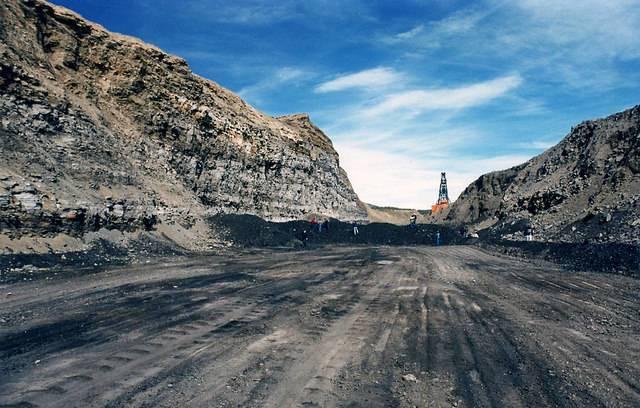

This morning, under the cover of "energy independence," U.S. President Donald Trump signed an executive order calling for a rewrite of the EPA's Clean Power Plan. The Plan is the cornerstone of U.S. commitment to curbing emissions under the Paris climate agreement, so the rewrite represents a significant rollback of U.S. global warming mitigation as a whole. Unlike the rhetoric surrounding health care, no replacement carbon regulation is under consideration.
In our examination last week, TriplePundit reviewed an early draft copy of the executive order, which cited conclusions from a report prepared by NERA Economic Consulting as the reason for the rollback. NERA researchers claimed the Plan will “cost up to $39 billion a year,” causing “double-digit electricity price increases,” all for “meaningless environmental impacts.” The NERA study was funded by the American Coalition for Clean Coal Electricity.
The damage doesn't stop there. The executive order also overturns limits on coal leasing on public lands -- the impacts of which will likely not be felt for decades. Given the reality of the coal industry, which even supporters of Trump's coal policy fear Trump doesn't really understand, there is little demand for additional coal leases on public land. And there likely won't be until the 2030s.
The order also eliminates consideration of the social cost of carbon for government agencies. Up until now, government officials were required to consider the economic impact of avoided environmental pollution when green-lighting new initiatives. The guidelines were originally drafted by the Ronald Reagan administration and strengthened under Barack Obama.
Energy independence?
Combined with the proposed budget released earlier this month, the impact of this morning's executive order is sweeping and harkens back to a world without environmental protections.
The assumptions upon which Trump and his advisors justify such draconian measures are themselves grounded in faulty data, according to research from Noah Kaufman of the World Resource Institute, a former NERA employee.
The NERA research assumes that the consistent, year-on-year growth of renewable energy --and rapidly expanding capacity and falling prices -- will not continue, which is extremely unlikely, Kaufman says. NERA relied heavily on data from the Energy Information Agency, which has an odd penchant for consistently underestimating the growth of the renewable sector.
Kaufman and his team cross-checked the data with four other models to test the justifications in the NERA report. Only one report, the EPA's own study, came down in the middle of the estimates, apparently the most detached from a preconceived outcome.
Kaufman stresses the importance of transparency when using paid research as a basis for policy decisions.
"When modelers have a favored result in mind, it's not so hard to take these models and produce the result that they want to produce." Kaufman told TriplePundit.
"It's so important to find an independent group for these studies"
To that end, Kaufman considers a report released by the Rhodium Group as an example of using clearly stated, moderate assumptions based on rigorous and non-biased data. This data readily supports the economic benefits of environmental regulations, unlike the biased data used in the NERA report.
The Paris Agreement, committed in name only
At his 2006 State of the Union address 11 years ago, former President George W. Bush, no particular friend to climate or alternative energy research, famously said: "America is addicted to oil."
Granted, the situation was different then: The fracking boom was still years in the future, and the "era of cheap natural gas" had not yet begun. But his words are still instructive.
Bush referred to "zero-emission coal plants, revolutionary solar and wind technologies, and clean, safe nuclear energy." Ten years on and we have, in fact, delivered on revolutionary solar and wind technologies. America stands poised as the world leader for ushering the beginning of the end for oil and all fossil fuels.
Today, Donald Trump may end all that, setting in motion a reversal of support for environmental protection, climate and earth science, and basic energy research. All, apparently, in the misguided or cynical assertion that it will "bring coal jobs back."
It won't. It threatens our national economy, credibility and the future of everyone on the planet. If the Trump administration remains a signatory in the Paris Agreement, it is in name only. Credibility is lost from a country that sees the future in attempting to go back to the past.
All for one more hit of our fossil fuel addiction. It can't go on forever.
Image credit: Flickr/Gord McKenna
Global Brewer AB InBev Pledges 100 Percent Renewable Power by 2025
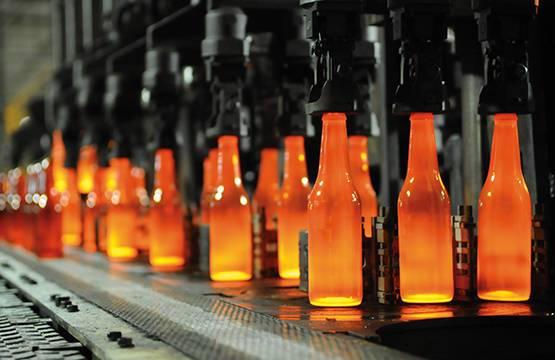

AB InBev, the international beer giant that owns hundreds of beer brands across 50 countries, announced today that it will source 100 percent of its electricity needs from renewables by 2025.
The company plans to eventually switch up to 6 terawatt-hours of annual electricity use from conventional sources such as coal and natural gas to renewables. According to the company’s number-crunching, the resulting slash in carbon emissions is equivalent to removing 500,000 cars from American roads annually.
“This is not an offset," Tony Milikin, AB InBev’s chief sustainability and procurement officer, told TriplePundit on Monday. "We’re aiming to invest in renewables within each country in which we do business."
The company is now focusing most of its clean-energy investment in Latin America. In Mexico, AB InBev’s largest brewery recently signed a power purchase agreement (PPA) with the Spanish clean-energy company Iberdrola. The Modelo plant, located in the state of Zacatecas, will provide 490 gigawatt-hours of clean power annually -- an amount Ab InBev says is sufficient to electrify all of its production sites across Mexico.
Many Latin American countries, including Mexico, have set ambitious clean-energy targets in recent years, especially in the wake of the December 2015 COP21 climate talks in Paris. The country joined its North American Free Trade Agreement (NAFTA) partners, the U.S. and Canada, in pledging to source at least half of its power from renewables by 2025. As The Economist reported, Mexico is one of many Latin American economies where governments have loosened energy regulations in order to make their countries more attractive for these investments.
General Motors (GM), for example, invested in wind power capacity in central Mexico two years ago in order to reduce its overall utility costs within the country. On average, Mexico’s utility costs are up to a third higher than north of the border in the U.S.
Brazil, a country Green Tech Media has noted as a leader in renewables investment within Latin America, is another target market for AB InBev as it works on its long-term clean power goals. The company has already started to use biogas in some of its Brazilian breweries, and expects 40 percent of its energy needs to come from such sources by the end of this year. The company, which owns the popular Brazilian brands Skol, Antarctica and Bohemia, expects to sign more PPAs for solar installations across Latin America’s largest economy.
From the company’s point of view, AB InBev understands that it must do more than brew creative beers to appeal to younger consumers. For years, the under-35 crowd has eschewed mass-produced beers such as Budweiser, Miller or Coors for the microbrews that exploded in popularity here in the U.S. and abroad. Hitching onto the clean-energy and environmental bandwagons is one way to appeal to these fickle consumers who lack the brand loyalty their parents and grandparents shared.
“From a passion standpoint, we understand that we have consumers for whom this is a passion point," Milikin told us. "We are matching our passion point with their passion point."
Overall, AB InBev expects to procure up to 85 percent of its electricity from direct power purchase agreements. The rest will be generated by on-site installations such as solar panels. Overall, the company projects this shift to renewables will reduce its overall carbon intensity by 30 percent.
As the global beer industry consolidated over the past decade, it also become more efficient on the water and energy fronts – which is necessary as the consumption of both are inextricably linked. Many of these companies, such as AB InBev’s once-competitor and recent acquisition SABMiller, have realized that their breweries often end up in regions that are coping with water stress.
A decade ago, most of these companies required five liters of water to make one liter of beer. Now, that ratio has narrowed to almost 3 to 1. The result is that less water consumed means less energy is needed – whether that is within a company’s brewery, or reducing the amount of energy required to move water across states and countries, and from reservoirs to plants.
And while AB InBev is making plenty of noise with its claim that it will become the global consumer goods sector's largest corporate purchaser of renewables, other programs -- although less flashy -- also help reduce the company’s environmental footprint. The company’s SmartBarley program, for example, seeks to source more beer-brewing ingredients locally rather than importing from afar. This program also works with farmers to increase watershed protection while improving the water efficiency of growing crops across the company’s supply chain, which can help to increase crop yields.
The result is that far more barley needed to produce beer in Mexico is grown locally – reducing the need to transport the ingredient from the U.S. while reducing emissions.
In addition to boosting its renewable energy capacity in Latin America, AB InBev said it will launch similar projects in India and South Africa – nations that have been hit hard by both water stress and a growing demand for electricity.
Image credit: AB InBev
Trump Nullifies Fair Pay and Safe Workplaces Rule For Federal Contractors
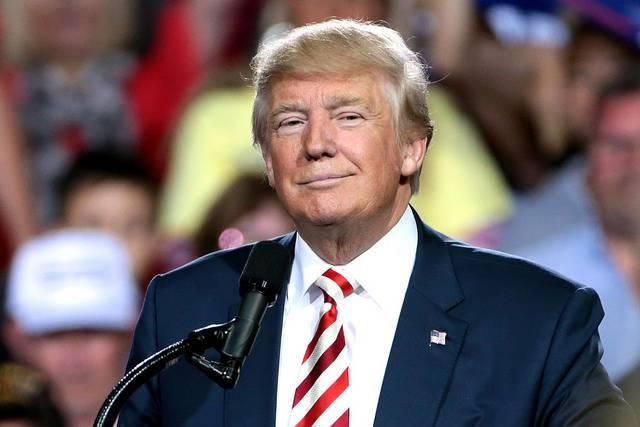

The pushback against social justice regulations passed under former U.S. President Barack Obama is in full force. This week incoming President Donald Trump signed a bill into law that essentially rolls back an Obama-era rule requiring companies to disclose labor law violations. It also prevented violating companies from receiving federal contracts.
The Obama-era executive order, called the Fair Pay and Safe Workplaces rule, pertains to federal contracts of $500,000 or more. On its face, the rule was designed to promote “economy and efficiency in procurement by contracting with responsible sources who comply with labor laws.” Obama signed it into law in 2014.
Trump’s statement on administration policy last month characterized the rule and other Obama-era regulations as “unnecessary and burdensome processes that would result in delays and decreased competition for federal government contracts.” He also claimed that rolling back the rule would “help to reduce costs in federal procurement.”
“The rule simply made it too easy for trial lawyers to go after American companies and American workers who contract with the federal government,” White House press secretary Sean Spicer said during a press conference on Monday.
Despite Trump’s campaign promises to help American workers, the president “continues to lard favors on corporate interests, in more of the corrupt inside-dealing he campaigned against,” Robert Weissman, president of Public Citizen, said in a statement . “Trump and congressional Republicans may not be able to join together to roll back health insurance, but when it comes to rolling back protections for the American people from predatory corporations, they know how to work together.”
“Every worker deserves strong protections on the job,” added Teamsters General President Jim Hoffa. “This is a very disappointing development since the Fair Pay and Safe Workplaces Executive Order not only protected workers at federal contractors, but ensured that our tax dollars were not going to be given to companies that violate labor law.”Several reports found numerous health, safety and wage violations by federal contractors. In 2013, about 40 percent of all federal contracting dollars went to federal contractors with health, safety or wage violations, a report by the think tank Demos found.
Between 1999 and 2013, contractors were fined almost $722 million for serious health, safety and employment law violations. During the same time period, violations of minimum wage laws amounted to anywhere between $8.6 billion and $13.8 billion in lost wages every year. And Americans working for federal contractors lose between $1.6 billion to $2.5 billion a year from minimum wage law violations, the think tank concluded.
About 22 percent of the American workforce is employed by companies that have at least one federal contract, according to a report compiled by Massachusetts Democrat Elizabeth Warren’s staff. And according to the senator's report, over 300,000 workers have been “victims of wage-related labor violations working while working under federal contracts in the last decade.”
Those men and women worked for almost 12,000 different companies that receive federal contracts. Over 600 companies have been caught violating wage-related contractor laws multiple times, Warren's team concluded, and in some cases the violations affected several thousand workers. Many of those repeat offenders continued to receive millions of dollars in taxpayer-funded contracts. Warren's office also cited violations of safety and health standards that caused a “wide range of physical harm to workers.”
The U.S. federal government pays over $500 billion in taxpayer money to private companies for services and goods every year, and much of that pays the salaries of millions of workers. But many of these employers violate the law: A 2013 Senate analysis found that nearly 30 percent of the top federal wage and safety law violators were federal contractors.
Eighteen federal contractors received one of the largest 100 penalties from the Occupational Safety and Health Administration (OSHA) between 2007 and 2012. Nearly half the total initial penalty dollars assessed for OSHA violations were against companies that held federal contracts in 2012. During that period, 42 American workers died as a result of OSHA violations by companies holding federal contracts.
The message that Congress and Trump are sending to the American people by rolling back an Obama-era rule that prevents violators of health, safety, and labor violations from receiving federal contracts is that only business interests matter. The needs of the American people take a back seat with this administration and with this Congress.
Image credit: Flickr/Gage Skidmore